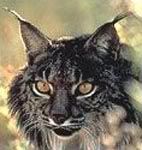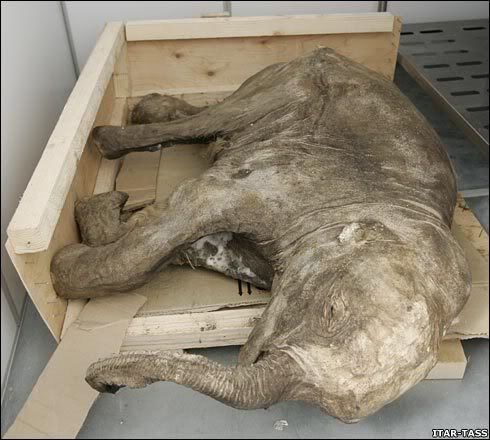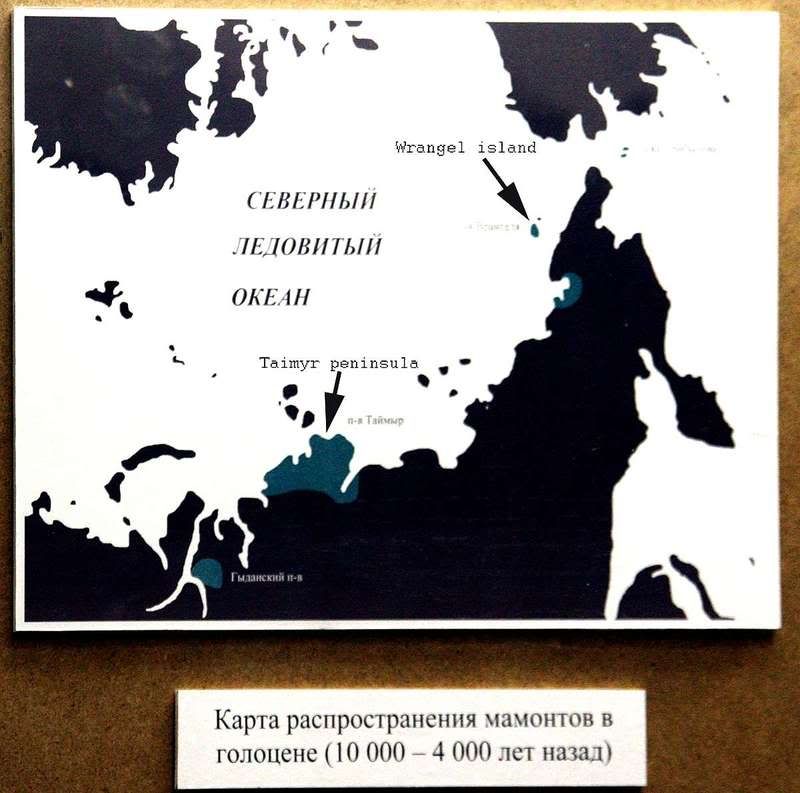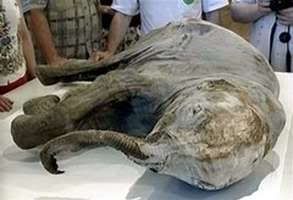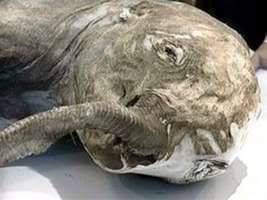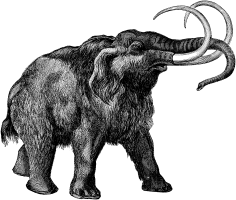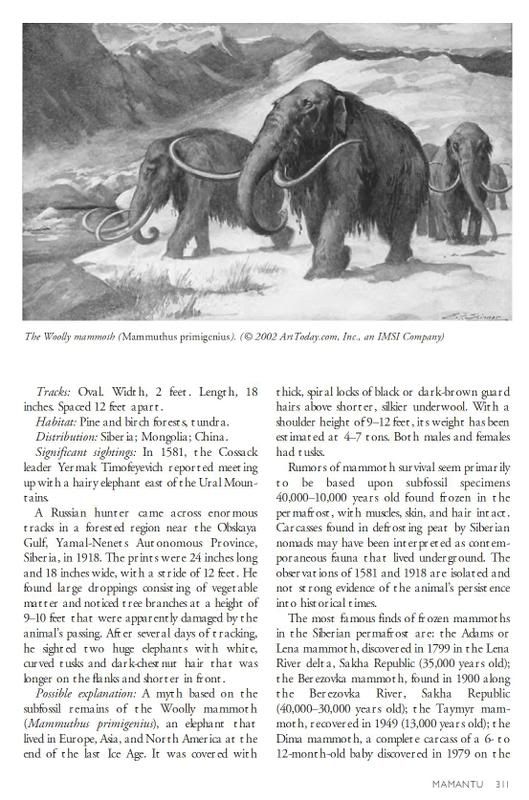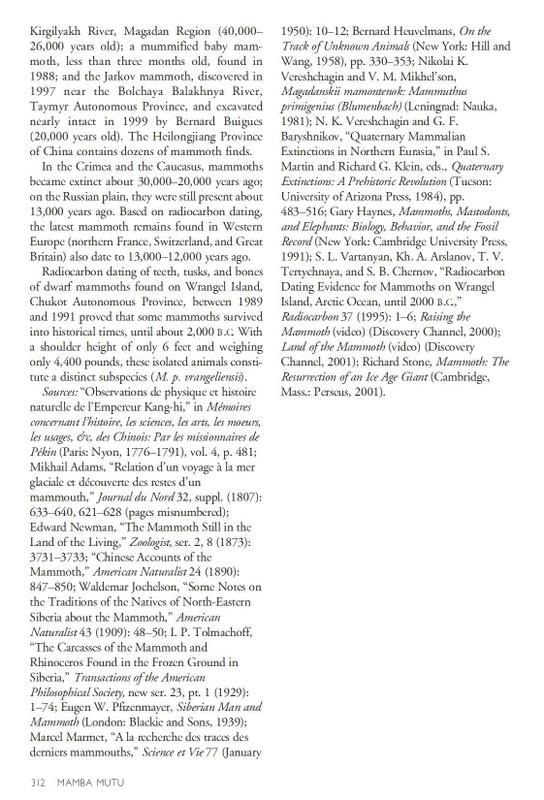Post by Carlos on Apr 19, 2006 20:54:45 GMT
THE NORTH OF EASTERN SIBERIA: REFUGE OF THE MAMMOTH FAUNA IN THE HOLOCENE (L)
Gennady BOESKOROV
The Mammoth Museum of the Institute of Applied Ecology of the Academy of Sciences of The Sakha Republic (Yakutia), 35 Lenin Av., Yakutsk, 677007
The global climate changes at the end of the Pleistocene led to extinction in the huge area of Northern Eurasia of the typical representatives of the Mammoth fauna: mammoth, woolly rhinoceros, wild horse, bison, muskox, cave lion, etc. Undoubtedly the Mammoth fauna underwent strong pressure from Upper Paleolithic Man, whose hunting activity could have played the main role in decreasing the numbers of mammoths and other representatives of the megafauna. Archaeological data testify that the typical representatives of the Mammoth fauna were hunted only until the end of the Pleistocene. Their bone remains are usually not found in the settlements of Mesolithic Man. Formerly it was supposed that the megafauna of the "Mammoth complex" was extinct by the beginning of the Holocene. Nevertheless the latest data testify that the global extinction of the Mammoth fauna took place in Northern Eurasia between the Pleistocene and the Holocene and was significantly delayed in the northern part of Eastern Siberia. In the 1990s radiocarbon dates proved that mammoths existed for most of the Holocene on Wrangel Island - from 8000 till 3700 years BP. New radiocarbon data show that wild horses inhabited the northern part of Eastern Siberia (the lower stream of Enissey river, the Novosibirskie Islands, and East Siberian seacoast) 3000 - 2000 years BP. Muskoxen lived on the Taimyr Peninsula and the Lena River delta about 3000 years BP. Some bison remains from Eastern Siberia are Holocene in age. The following circumstances could promote the survival of representatives of the Mammoth fauna. The cool and dry climate of this region promoted the maintenance of steppe associations - habitats of those mammals. Late Paleolithic and Mesolithic settlements are not found in the Arctic zone of Eastern Siberia from the Taimyr Peninsula to the lower stream of the Yana River; they are very rare in the basins of the Indigirka and Kolyma rivers. So the small number of Stone Age hunting tribes in Northeastern Siberia was another factor in long-term survival of some representatives of the Mammoth fauna.
www.yukonmuseums.ca/mammoth/abstra-d.htm
Gennady BOESKOROV
The Mammoth Museum of the Institute of Applied Ecology of the Academy of Sciences of The Sakha Republic (Yakutia), 35 Lenin Av., Yakutsk, 677007
The global climate changes at the end of the Pleistocene led to extinction in the huge area of Northern Eurasia of the typical representatives of the Mammoth fauna: mammoth, woolly rhinoceros, wild horse, bison, muskox, cave lion, etc. Undoubtedly the Mammoth fauna underwent strong pressure from Upper Paleolithic Man, whose hunting activity could have played the main role in decreasing the numbers of mammoths and other representatives of the megafauna. Archaeological data testify that the typical representatives of the Mammoth fauna were hunted only until the end of the Pleistocene. Their bone remains are usually not found in the settlements of Mesolithic Man. Formerly it was supposed that the megafauna of the "Mammoth complex" was extinct by the beginning of the Holocene. Nevertheless the latest data testify that the global extinction of the Mammoth fauna took place in Northern Eurasia between the Pleistocene and the Holocene and was significantly delayed in the northern part of Eastern Siberia. In the 1990s radiocarbon dates proved that mammoths existed for most of the Holocene on Wrangel Island - from 8000 till 3700 years BP. New radiocarbon data show that wild horses inhabited the northern part of Eastern Siberia (the lower stream of Enissey river, the Novosibirskie Islands, and East Siberian seacoast) 3000 - 2000 years BP. Muskoxen lived on the Taimyr Peninsula and the Lena River delta about 3000 years BP. Some bison remains from Eastern Siberia are Holocene in age. The following circumstances could promote the survival of representatives of the Mammoth fauna. The cool and dry climate of this region promoted the maintenance of steppe associations - habitats of those mammals. Late Paleolithic and Mesolithic settlements are not found in the Arctic zone of Eastern Siberia from the Taimyr Peninsula to the lower stream of the Yana River; they are very rare in the basins of the Indigirka and Kolyma rivers. So the small number of Stone Age hunting tribes in Northeastern Siberia was another factor in long-term survival of some representatives of the Mammoth fauna.
www.yukonmuseums.ca/mammoth/abstra-d.htm


